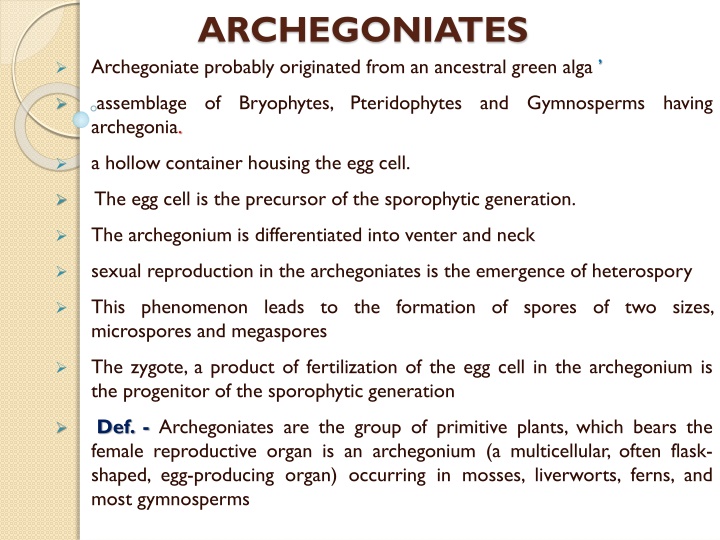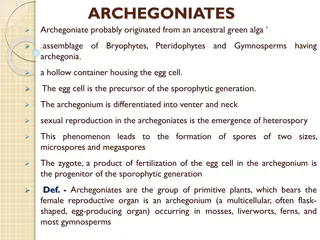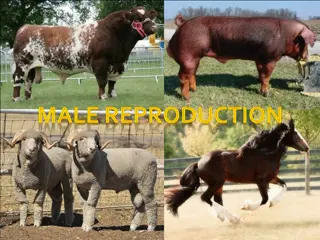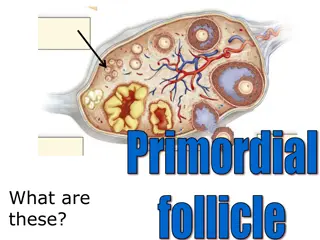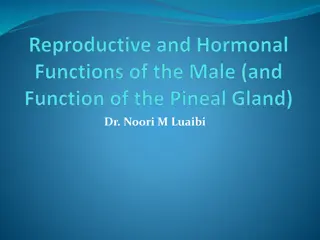Archegoniates: Primitive Plants with Unique Reproductive Structures
Archegoniates are a group of primitive plants believed to have originated from ancestral green algae. They possess distinct reproductive structures such as archegonia, which house the egg cell and give rise to the sporophytic generation. Heterospory in archegoniates leads to the formation of microspores and megaspores. These plants exhibit a unique alternation of generations with morphological adaptations for survival on land, such as efficient spore dispersal mechanisms and specialized reproductive organs. Bryophytes, pteridophytes, and gymnosperms are examples of archegoniates that have evolved diverse strategies to thrive in terrestrial environments.
Download Presentation

Please find below an Image/Link to download the presentation.
The content on the website is provided AS IS for your information and personal use only. It may not be sold, licensed, or shared on other websites without obtaining consent from the author.If you encounter any issues during the download, it is possible that the publisher has removed the file from their server.
You are allowed to download the files provided on this website for personal or commercial use, subject to the condition that they are used lawfully. All files are the property of their respective owners.
The content on the website is provided AS IS for your information and personal use only. It may not be sold, licensed, or shared on other websites without obtaining consent from the author.
E N D
Presentation Transcript
ARCHEGONIATES Archegoniate probably originated from an ancestral green alga assemblage of archegonia. Bryophytes, Pteridophytes and Gymnosperms having a hollow container housing the egg cell. The egg cell is the precursor of the sporophytic generation. The archegonium is differentiated into venter and neck sexual reproduction in the archegoniates is the emergence of heterospory This phenomenon leads to the formation of spores of two sizes, microspores and megaspores The zygote, a product of fertilization of the egg cell in the archegonium is the progenitor of the sporophytic generation Def. - Archegoniates are the group of primitive plants, which bears the female reproductive organ is an archegonium (a multicellular, often flask- shaped, egg-producing organ) occurring in mosses, liverworts, ferns, and most gymnosperms
: Unifying characters of archegoniates: The archegoniates seem too monophyletic group of ancient stock of aquatic green algae. Present of sexual organs the female called archegonium and the male called the antheridium. The presence of Chloroplasts containing chlorophyll a, b and carotene. The presence of multicellular gametophytic and sporophytic generation. Heteromorphic alternation of generation. The morphological reduction of the sexual or the gametophytic phase was evident in the life cycle of archegoniate. Provides protection to their embryo. Male gametes are flagellated and motile in bryophytes, pteridophytes, (Cycadales, Ginkgoales) while the female gamete (egg) is non-motile. have originated from a 1. 2. 3. 4. 5. 6. 7. 8.
: Unifying characters of archegoniates: Bryophytes and Pteridophytes depend upon the presence of fluid water for fertilization. In gymnosperms, pollen grains germinate to form a pollen tube (siphonogamy) which is not dependent on external fluid water to reach the archegonial neck. 10. The transmigration of plants to the land habit led to specialization coupled with varied spore dispersal mechanisms leading to their successful spread on land with genetic variation. 11. Plants adapted to life on land by internalizing the external atmosphere and exploring the soil in an intensive way. 12. Spores also became resistant to desiccation through further specialization in seed plants. 13. Differentiated rhizoids and roots to provide strong anchorage and efficient supply of water and mineral nutrients. 9.
: Unifying characters of archegoniates: 14. Increased the green surface area to provide more chlorophyll for efficient photosynthesis. 15. Developed an efficient vascular system to provide water to every part of the plant body. 16. Evolved the mechanism of transpiration to regulate the internal temperature. 17. Developed waxy cuticle to restrict water loss and formed stomatas to regulate gaseous exchange. 18. Differentiated tissues with thickened cell walls (collenchyma) and lignified walls (sclerenchyma) to support the erect habit. 19. Efficient spore dispersal mechanism. 20. The archegoniates evolved several adaptive strategies to survive on land
Alternation of generation: Bryophytes: - The alternation of generations is very distinct in the archegoniatae. 1. It appears in the haplodiplontic type of life cycle 2. The alternation Bryophytes,Pteridophytes and Gymnosperms of generation is slight different in 3. The life cycle of bryophytes shows regular alternation of gametophytic and sporophytic generations. The haploid phase (n) is the gametophyte or sexual generation It bears the sexual reproductive organs, which forms gametes,i.e.antherozoids and eggs gametic union a zygote is formed which develops into a sporophyte (2n) deploid phase. 4. 5. 6. 7.
Alternation of generation: Sporophyte forms spores, which always germinate to form gametophytes During the formation of spores, the spore mother cells divide meiotically and haploid spores are formed. 10. The production of the spores is the beginning of the gametophytic or haploid phase 11. The spores germinate and form gametophytic or haploid phase 12. The spores germinate and produce gametophytes, which bear sex organs 13. Ultimately, the gametic union takes place and zygote is resulted. It is diploid (2n). 14. This is the beginning of the sporophytic or diploid phase. 8. 9.
Alternation of generation: 15. Here the two generations are morphologically different, the type of alternation of generations is called heteromophic 16. The gametophytic generation is conspicuous and longer- lived phase of life-cycle in comparison to that of sporophyte generation 17. In bryophytes, the gametophyte is quite independent whereas the sporophyte is dependent somehow or other on the gametophyte for its nutrition 18. The gametophyte produces sporophyte and sporophyte to the gametophyte and thus there is regular alternation of generations
Alternation of generation: Pteridophytes: - In Pteridophytes, the haploid phase (n) is gametophytic generation or sexual phase 1. It bears reproductive organs -anthredia and archegonia. 2. The Anthredia and archegonia produces flagellate antherozoids and egg respectively 3. Gametophyte may be monoecious as in homosporous sp. / dioecious in heterosporous sp. 4. The Gametophyte is independent in Pteris and dependent in Selaginella. 5. Diploid phase (2n) or sporophytic stage forms from zygote after fertilization 6.
Alternation of generation: Pteridophytes: - Meiosis in SMC (spore mother cell) forms non-motile haploid spore, which germinate to form gametophyte again. 7. This cycle continues with alternation between gametophye and sporophyte. 8. All spore formed may be of one type i.e. homosporous species (Lycopodium, Dryopteris). 9. 10. Spores formed may be of two types i. e. heterosporous species (Selaginella, Marsilea). 11. Microspores/male spores developed in male sporangia germinate to form male gametophyte. 12. Megaspores/female spore developed in megasporangia germinate to form female gametophyte.
Alternation of generation: Pteridophytes: - 13. Sporophyte is dominant phase in life cycle. 14. It is independent of the gametophyte (prothallus) and grows to a much greater size. 15. Sporophytes are differentiated into stems, leaves and roots and shows well developed conducting tissues.
Gymnosperms: - The dominant phase in the life cycle is the diploid (sporophyte) stage. 1. The gametophytes are very small and cannot exist independent of the parent plant. 2. The reproductive structures of the sporophyte (cones), produce two different kinds of haploid spores: microspores (male) and megaspores (female). 3. This phenomenon of sexually differentiated spores is called heterospory. 4. These spores give rise to similarly sexually differentiated gametophytes, which in turn produce gametes. 5. Fertilization occurs when a male and female gamete join to form a zygote. 6. resulting embryo, encased in a seed coating, become sporophyte. 7.
